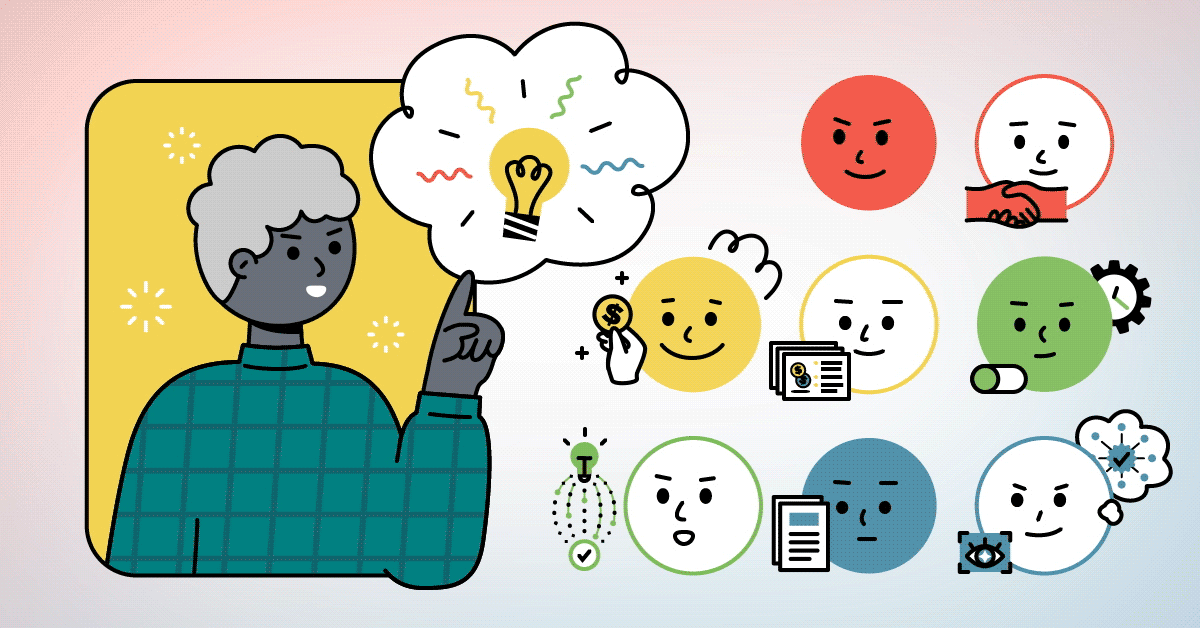
At some point in your professional life, you’re going to have to make a sale. That might not be in the traditional sense; selling can be pushing for change, convincing others of new methods of working, asking for a promotion, or acing an interview. Knowing how to sell to other behavioral types is invaluable for these situations.
This blog series is reviewing each DISC type and how they can sell to others.
DISC Selling Skills for Direct Communicators
DISC Selling Skills for Reflective Communicators
The Outgoing Communicator In-Depth
Outgoing communicators are focused on creating an experience for themself and others, especially in a salesperson role. They are optimistic and enthusiastic, tending to strongly believe in their own ideas and dreams, and this big-picture thinking gives them a unique perspective but can also get in their way.
A people-focused approach might lead to High I communicators overlooking details. Focusing on feelings over logic can work as an approach but not for all other behavioral types and not all of the time, so Outgoing communicators need to remember to close the deal properly and not get carried away. Their enthusiasm can also turn off more reserved communicators; they also might dominate the conversation and overwhelm their sales target.
How Outgoing Communicators Can Sell to Every Behavioral Type
Outgoing Communicators Selling to Direct Communicators (High D)
The Direct communicator is looking for results.
Direct communicators are ambitious, forceful, decisive, strong-willed, independent, and goal-oriented. They tend to seek out leadership positions and enjoy clear and brief conversations, valuing facts and details over-enthusiasm. In general, they prefer to get to the point as quickly and concisely as possible.
The Outgoing communicator needs to emphasize potential results in this interaction. Get to the point quickly, demonstrating the value of the deal and the positive effect it’ll have on the Direct communicator’s interests. Make sure not to overpromise or misdirect— a Direct communicator will be on alert for any attempt to ‘overpower’ them and they will be looking for reasons to disagree.
Try to keep this interaction short and formal. High Ds aren’t looking for friends, so Outgoing communicators shouldn’t joke around unless they want to be the punchline. Remember, the goal here is to ease High Ds into feeling like they have control of the interaction without getting pushed around. If you close confidently, make sure to do so directly by briefly outlining the next steps in the sales process. Don’t plead or try to persuade beyond strongly making your case; a high D will respect your firmness.
Outgoing Communicators Selling to Reflective Communicators (Low D)

The Reflective communicator is looking for an agreement.
You might think Outgoing communicators and Reflective communicators are a bad match, but that’s not always the case! Reflective communicators are cooperative, low-key, modest, and mild. They tend to engage people by being agreeable and outcome-focused, and prefer clear, precise and thorough communication.
For this sale to succeed, Outgoing communicators need to invest in understanding. Use your people skills to hone in your conversation and really take the time to listen to Reflective communicators— they will open up and thrive with a slow approach and a friendly conversation!
The biggest risk here is overpowering the low D. They might fold and agree simply for a more pleasant experience, but they can become less likely to work with you in the future. Make sure to form a genuine connection by pulling back on an aggressive approach or boisterous conversation.
Outgoing Communicators Selling to Outgoing Communicators (High I)
The Outgoing communicator is looking for the experience.
This is obviously a great match in terms of energy and priority; your fellow high I is looking to make a connection, negotiate freely, and find a mutually beneficial outcome.
The challenge here will be to reign in your own talkative tendencies! Let the other high I lead the conversation without sidelining your interests; focus on the benefit to them and their people while subtly guiding back to the sales objective. Make sure not to get carried away in having a good time, but let yourself enjoy the interaction!
Outgoing Communicators Selling to Reserved Communicators (Low I)
The Reserved communicator is looking for mutual benefit.
Reserved communicators are restrained, controlled, and reflective. They prefer to be socially discreet and can struggle to engage with styles very different from their behavioral style, so this is going to be a challenge. Make sure it’s one you are up to by adapting to their lower energy style and approaching this as an opportunity to connect.
Stick to a quiet, casual approach— a lower volume and a softer pitch will get you far. Make sure to focus on facts and tangible results instead of feelings, and give them copies of that information to review on their own.
Make sure to listen carefully to any information a Reserved communicator gives you. They don’t share often, so value their time and effort when you’re conversing. Give them lots of space, physically and in the conversation— don’t expect a hard sell or a quick close. A low I will want to check your work, think things through, and make a smart decision. Give them the tools to do that and then back off for the pay off.
Outgoing Communicators Selling to Steady Communicators (High S)
The Steady communicator is looking for understanding.
Steady communicators prefer a slow pace, defined responsibilities, and clearly outlined expectations. They are considerate, compassionate, and accepting of others, but might seem indifferent or hesitant on the surface.
Outgoing communicators and Steady communicators will easily build a warm rapport, but high Is can overpower them easily. A high S might agree simply to keep the conversation pleasant but withdraw from the sale later and close off.
Don’t put them on the spot during this sale. You’re going to want to give them plenty of time and space to think through their options and consider your pitch. Make sure to follow up in writing and asking them specifically for questions in that communication.
Outgoing Communicators Selling to Dynamic Communicators (Low S)

The Dynamic communicator is looking for new ideas.
Low Ss are open and confident about sharing information, and they prefer lively, fast-paced conversation. Luckily, Outgoing communicators are well-positioned to keep up! Let the conversation flow and make an effort to track their thought process if they’re jumping around different subjects. Let your talkative tendencies shine and match their energy.
Make sure to anticipate multiple pathways to your endgoal; stay on your toes and let them lead the flow. Have the information they’ll need to move forward available, since they might make a snap decision either way mid-conversation.
Outgoing Communicators Selling to Precise Communicators (High C)
The Precise communicator is looking for information.
Precise communicators are dependent, neat, careful, and compliant. They want to get the job done right and thrive on establishing routines and processes to follow in the workplace.
This is a poor match for both sides; Outgoing communicators are people-focused, not detail-focused, and Precise communicators are the opposite way. High Is might rely on emotion and connection to make a deal and that’s simply not going to work on a high C.
Make sure to lead with facts, figures and proof. Keep your pitch logical, compact, and non-personal. Precise communicators want hard facts and all necessary information to make a well-considered decision, so make sure that you can back up any and all claims in this conversation. Actively ask them for questions and then proceed to close the deal if they are receptive. Be friendly and direct, but not overly personal— Precise people want facts over friendship in a business conversation.
Outgoing Communicators Selling to Pioneering Communicators (Low C)
The Pioneering communicator is looking for a vision.
Pioneering communicators are independent, unconventional, experimental, and outspoken. They can roll with the punches and adjust on the fly and might even prefer to do so, so Outgoing communicators get to stay flexible and friendly, which is their natural style!
Pioneering communicators and Outgoing communicators are both big-picture thinkers; they like to dream, consider possibilities, and push for favorable outcomes, even if they seem far-fetched. This shared tendency will help create a connection but it’s also something high I salespeople need to watch out for.
Try to stay centered in this interaction and don’t let a Pioneering get too off topic! Make sure to engage them throughout with specific questions; get their input and incorporate it into your pitch. Have numbers on hand if they ask for them but feel free to paint a picture for them and focus on the benefit and effect of the sale more than the numbers.
Make the Sale the Outgoing Way!
Outgoing communicators are well-positioned to close deals and connect with all other behavioral types by adapting to the styles of others. Their appreciation of people can help them position themselves to create win-win sales situations and genuine connections.
Are you interested in harnessing the power of DISC? If you’re ready to start using DISC today, TTI SI can help!
Do you want to take a DISC assessment or start using assessments for your team? Let us know here.
Are you interested in joining our network as a reseller? Get the info you need here.




